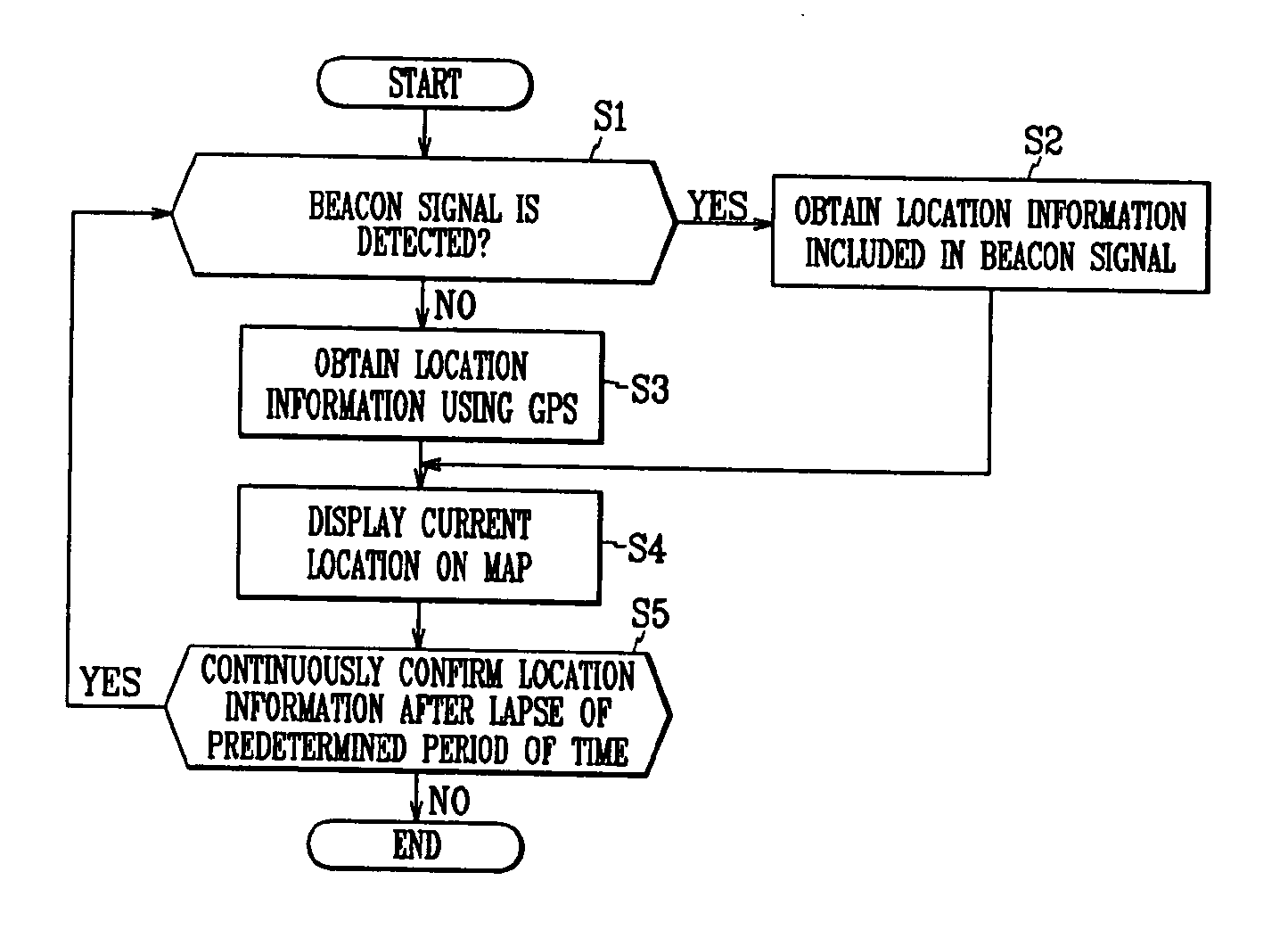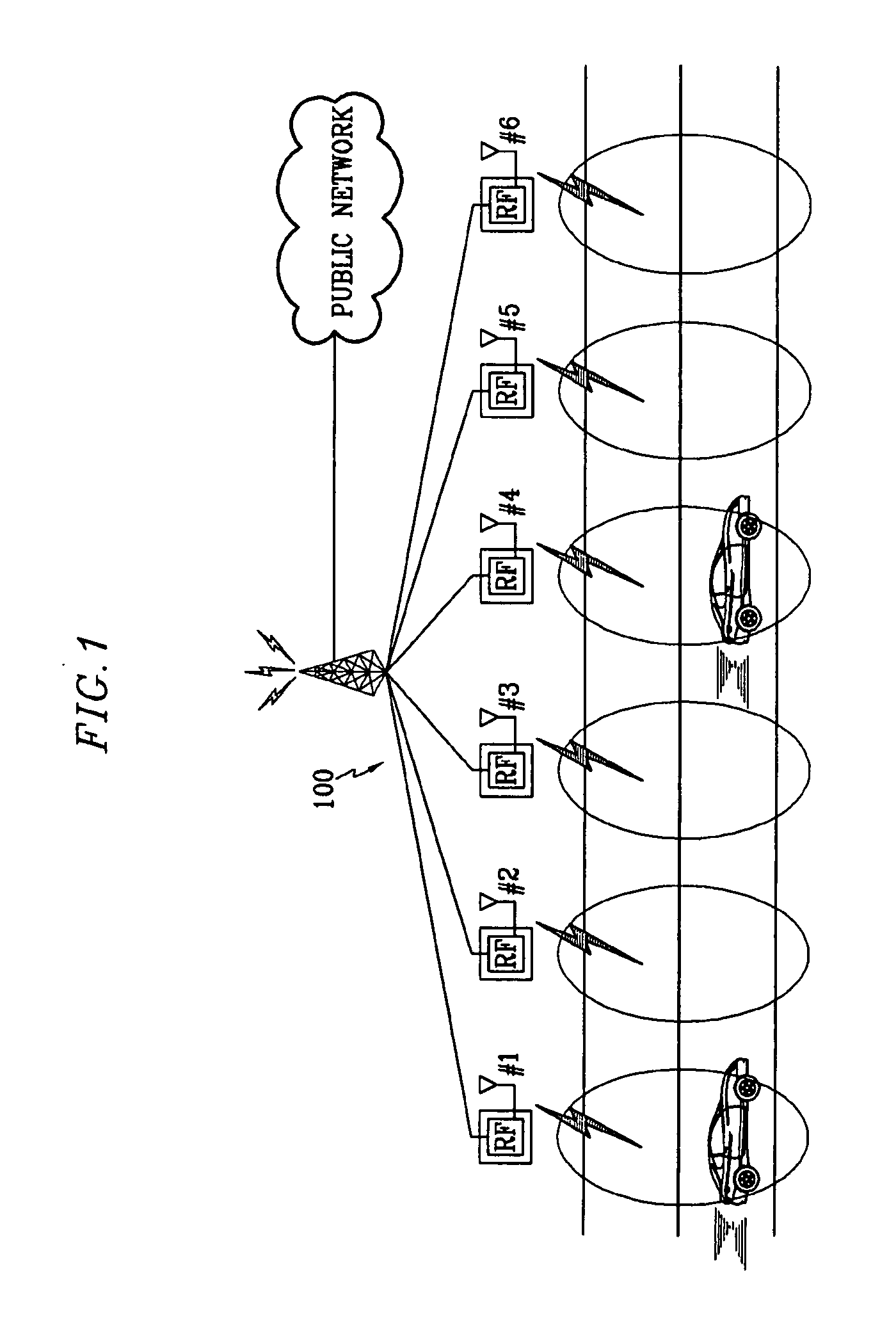Base station and mobile terminal for location detection, and location detecting method
a mobile terminal and location detection technology, applied in the direction of measuring devices, selection arrangements, instruments, etc., can solve the problems of limiting the location detection, consuming a large amount of electric power, and requiring a long time to first fix, etc., to achieve accurate detection of the location of the mobile terminal
- Summary
- Abstract
- Description
- Claims
- Application Information
AI Technical Summary
Benefits of technology
Problems solved by technology
Method used
Image
Examples
first embodiment
[0037] Referring to FIGS. 1, 2, and 3, the base station 100 according to the invention includes a plurality of antennas 101 each of which has an RF module, a location information generator 110, a central processing unit 120, a location information processor 130, a modulating / demodulating unit 140, a memory 150, a plurality of multiplexers 160, and a buffer 170.
[0038] A cell diameter of each of the antennas 101 is set to 10 to 15 m, such that accuracy of location information in each cell is improved.
[0039] The location information generator 110 generates location information of each of the antennas 101. The central processing unit 120 prevents the plurality of antennas from interfering with one another, and processes data transmitted and received between the base station and a mobile terminal. In addition, the central processing unit 120 generates a periodic beacon signal and sends it to the mobile terminal.
[0040] The location information processor 130 loads the location informatio...
second embodiment
[0042]FIG. 4 shows a configuration of a mobile terminal for location detection according to the present invention.
[0043] Referring to FIG. 4, the mobile terminal 200 includes antennas 201 respectively having RF modules, a DSRC transceiver 210, a GPS receiver 220, a central processing unit 230, an IC card interface 240, and a memory 250.
[0044] The mobile terminal extracts location information from the header of the beacon signal transmitted from the base station in an area where location detection is impossible through the GPS receiver 220 to detect a location of the base station.
[0045] The GPS receiver 220 detects the location of the base station using a GPS. When the DRSC transceiver 210 does not detect the beacon signal, the central processing unit 230 calls location detection data from the GPS receiver 220. The IC card interface 240 is interfaced to an IC card used for communication. The IC card stores personal information and processes codes, and has high security. The memory ...
PUM
 Login to View More
Login to View More Abstract
Description
Claims
Application Information
 Login to View More
Login to View More - R&D
- Intellectual Property
- Life Sciences
- Materials
- Tech Scout
- Unparalleled Data Quality
- Higher Quality Content
- 60% Fewer Hallucinations
Browse by: Latest US Patents, China's latest patents, Technical Efficacy Thesaurus, Application Domain, Technology Topic, Popular Technical Reports.
© 2025 PatSnap. All rights reserved.Legal|Privacy policy|Modern Slavery Act Transparency Statement|Sitemap|About US| Contact US: help@patsnap.com



